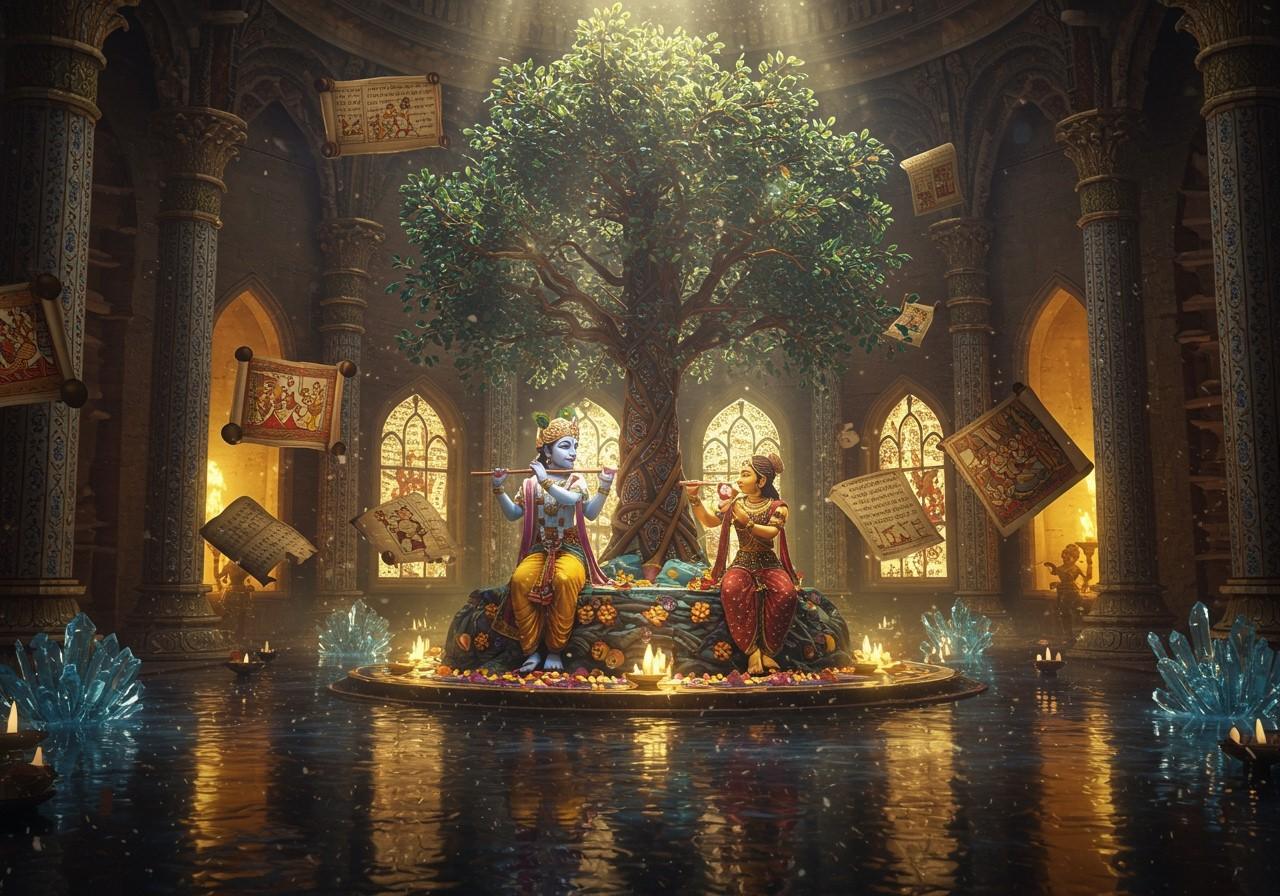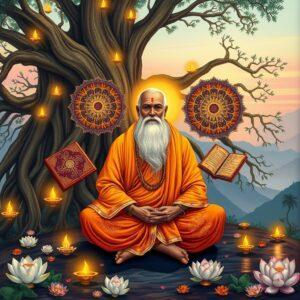
The Mahabharata, a cornerstone of Indian literature and philosophy, narrates the Kurukshetra War and the destinies of the Kaurava and Pandava princes. This comprehensive guide navigates through the diverse versions, translations, and interpretations of this epic, empowering you to select the most suitable option.
Understanding the Mahabharata
Central to Indian culture, the Mahabharata delves into profound themes such as dharma (duty/righteousness), karma (action), and the eternal conflict between good and evil. The epic’s core narrative revolves around the Kurukshetra War, a battle of immense proportions fought between the Kauravas and Pandavas. Key figures like Krishna, Arjuna, Bhishma, and Draupadi shape the narrative. Embedded within the epic are philosophical discourses, including the revered Bhagavad Gita.
Structure and Context
The Mahabharata’s structure comprises 18 parvas (books), each exploring different facets of the narrative and its teachings. This blend of historical events and mythological elements distinguishes the Mahabharata within India’s rich epic tradition.
Versions of the Mahabharata
Numerous versions of the Mahabharata exist, each with distinct characteristics:
- Critical Edition: The Bhandarkar Oriental Research Institute’s critical edition is widely regarded as the most authoritative version.
- Regional Versions: These versions reflect local cultures and traditions, offering unique perspectives.
- Tamil: Early translations appeared as early as the ninth century, including notable works by poet Perundevanar and a fourteenth-century version (as of 2024).
- Malayalam: M.T. Vasudevan Nair’s “Randamoozham” (translated into English as “Second Turn” and “Bhima: Lone Warrior”) presents a distinctive interpretation (as of 2024).
- Kannada: Explore the rich literary tradition of Kannada through its unique Mahabharata rendition.
- Telugu: Discover the Telugu version, adding to the diversity of Mahabharata interpretations.
- Abridged Versions and Retellings: Accessible retellings by authors like C. Rajagopalachari and R. K. Narayan cater to modern readers. Adaptations across media, including television, films, and graphic novels, further popularize the epic.
English Translations
Notable English translations include:
- Comprehensive: Kisari Mohan Ganguli’s translation stands as one of the earliest and most comprehensive renditions.
- Abridged: C. V. Narasimhan’s version prioritizes readability for a wider audience.
- Critical: Bibek Debroy’s translation provides extensive notes and commentary for in-depth study.
The choice of translation depends on balancing accuracy and accessibility.
Translations in Indian Languages
The Mahabharata’s availability extends to numerous Indian languages:
- Hindi: Gita Press’s translation holds widespread respect and recognition.
- Kannada: Kumara Vyasa’s rendition is highly regarded within the Kannada literary landscape.
- Telugu: The collaborative translation by Nannaya, Tikkana, and Yerrapragada is considered a masterpiece of Telugu literature.
- Malayalam: Kunjikkuttan Thampuran’s version is celebrated for its poetic beauty and evocative language.
Interpretations and Commentaries
Delving deeper into the Mahabharata’s meaning involves exploring various interpretations and commentaries:
- Philosophical: Commentaries by Adi Shankaracharya and Madhvacharya offer theological perspectives.
- Modern: Contemporary scholars like Wendy Doniger provide fresh insights and interpretations.
- Feminist: These interpretations focus on the roles and experiences of female characters within the epic.
Choosing Your Mahabharata
Selecting the ideal Mahabharata depends on your familiarity with the epic, language preference, and desired level of analysis. Reading reviews and seeking recommendations can guide your choice. Begin with an abridged version or retelling if you’re new to the epic. Explore different translations and interpretations to enrich your understanding and appreciation.
Arjun Bark: A Sacred Offering from Poojn.in
As you embark on your exploration of the Mahabharata, consider deepening your connection with the epic through the symbolic use of Arjun bark. Available at Poojn.in, this sacred bark, named after the valiant warrior Arjuna, is revered for its spiritual significance. Known by various names across India, Arjun bark (Arjuna/अर्जुन) is carefully sourced and packaged to preserve its purity and potency. Enhance your study and rituals with this sacred offering from Poojn.in.
Conclusion
Exploring the Mahabharata is an enriching journey through India’s profound cultural and spiritual heritage. Its diverse versions, translations, and interpretations cater to a wide range of interests. Whether you seek a comprehensive study or an engaging narrative, there’s a Mahabharata for you. Embrace this epic with respect and curiosity, allowing its timeless wisdom and values to inspire and guide you.


